Kyiv, Ukraine – The very names of suburbs where Marina Krasnolenska sells real estate may make one tear up.
Bucha, Irpin, Vorzel and nearby areas north of the Ukrainian capital are where Russian servicemen were accused of killing, wounding, robbing or raping thousands of civilians.
Shelling during Moscow’s invasion destroyed or damaged hundreds of buildings, often burying residents alive, and the shock waves made thousands of roofs leaky.
Selling property in the area in the months following the withdrawal of Russian troops last year was tricky.
Clients asked to find real estate in “undamaged districts”, she told Al Jazeera.
“When looking at damaged locations, they said, ‘This smells of death,’” said Krasnolenska, a 45-year-old mother of two who left her hometown Vorzel just before the invaders rolled in.
But as infrastructure, roofs, roads and bridges are being rebuilt, customers are no longer repulsed, and homes north of Kyiv, just like almost elsewhere in Ukraine, sell like hot potatoes.
“Our region sells very well,” said Krasnolenska, who worked as an estate agent for 20 years. “Prices didn’t go back to pre-war levels, but the market is very much alive. Which is surprising to me too.”
Millions of refugees have spilled out of Ukraine, and at least one in three plans to return after the war.
Ukraine’s birth rate of 1.22 children per woman is one of the world’s lowest and leaves little hope for post-war repopulation.
A million men have been mobilised, leaving their families and jobs, including in construction, while others of conscription age are banned from crossing the border.
Last year, Ukraine’s economy shrank by a third, inflation went up by more than a fourth, and only multibillion Western aid pays the bills of President Volodymyr Zelenskyy’s government.
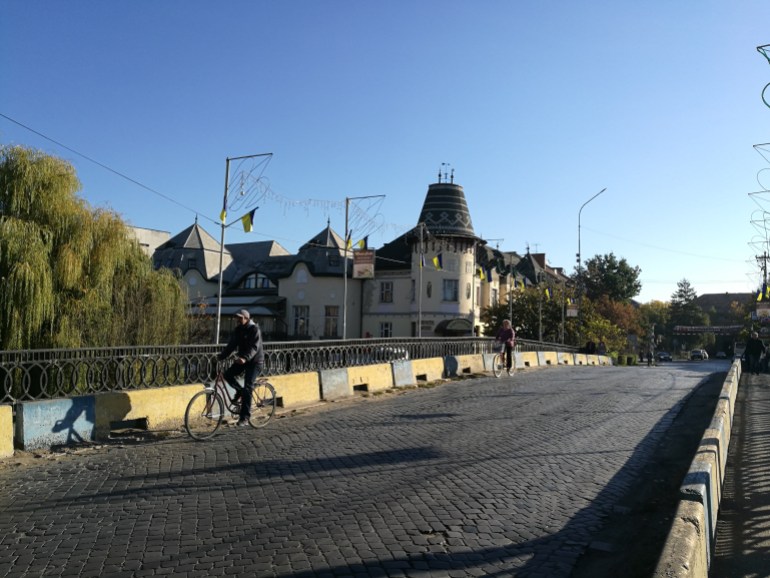 House prices in the southwestern city of Uzhhorod are said to have soared despite the war [Mansur Mirovalev/Al Jazeera]
House prices in the southwestern city of Uzhhorod are said to have soared despite the war [Mansur Mirovalev/Al Jazeera]
But real estate lost value significantly only in eastern and southern areas close to the front lines, while price tags in western regions skyrocketed by up to 75 percent.
One of the leaders is Uzhhorod, a picture-perfect city in Ukraine’s west with medieval cathedrals, Europe’s longest linden alley – and the Slovakian border nearby.
Housing prices in central Ukraine went down 25-30 percent – but are moving up as the market shows unexpected growth and some developers restart suspended construction projects.
One reason is the nationwide habit of stashing thick wads of cash in US dollars or euros.
Despite dwindling income, Ukrainians keep about $25bn in banks and between $60bn and $100bn outside them, said Denis Sudilkovskiy, marketing director of the LUN real estate agency in Kyiv.
“A significant part of the population has not lost the capability and the very idea of owning their own home,” he told Al Jazeera.
The boom follows a freeze.
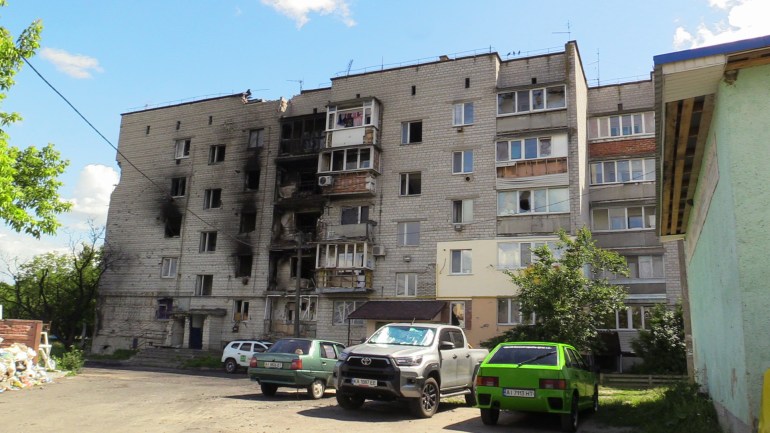 A partially damaged building in the town of Makaryv north of Kyiv [Mansur Mirovalev/Al Jazeera]
A partially damaged building in the town of Makaryv north of Kyiv [Mansur Mirovalev/Al Jazeera]
After the war began on February 24, 2022, authorities stopped registering real estate deals for more than six months.
When the freeze was over, sales stalled, and rent rates plummeted.
But as Russian forces withdrew or were kicked out of large areas in the east and south, many rushed to buy new homes.
“I would call it a syndrome of delayed happiness,” Krasnolenska said. “Each person has plans to buy a house or an apartment. And this desire grew into good demand, because people are tired of waiting.”
The war also continued an old trend.
More than two-thirds of Ukrainians are urbanites living in apartment buildings with central heating, water and power supply.
But many cherish memories of their grandparents’ village houses – and a chance to draw water from a well, tend a garden or taste a homegrown pear.
Even before the war and the COVID-19 pandemic, it was a nationwide obsession – eight in 10 Ukrainians wanted to live in a house instead of an apartment, according to a 2013 poll.
The trend seems to have gotten stronger after last October, when Moscow began launching missiles and drones to destroy civilian infrastructure, especially power and central heating stations.
Millions lived through blackouts and disruption of water and heat supply that sometimes lasted for days amid freezing winter temperatures.
“Sometimes, we went to my father’s country house just to warm up, go to a sauna and sleep in warmth,” Natalya Roslavets, an embroidery artist from northern Kyiv, told Al Jazeera describing a spacious house with a wood furnace and a diesel generator.
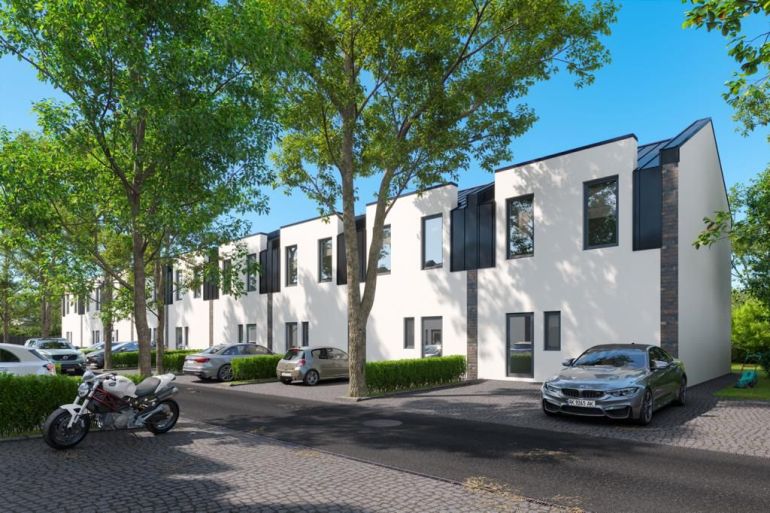 A computer simulation of townhouses built by Maksym Kryachek’s company [Courtesy: Maksym Kryachek]
A computer simulation of townhouses built by Maksym Kryachek’s company [Courtesy: Maksym Kryachek]
For many middle-class Ukrainians, the dream is a townhouse with a water well, a power generator and even solar panels, and a patch of land big enough for a kitchen garden, a children’s playground and a barbecue.
“Considering the war, sales are excellent,” Maksym Kryachek, whose construction company is building 21 two-storey townhouses in eastern Kyiv, told Al Jazeera.
Each sells for $75,000, the price of a two-bedroom apartment in an uptown district, and most have already been snapped up.
“People don’t want to live in apartments, they see that for the same money, they can have parking, a backdoor garden, and more space,” he said.
The first buyer has already finished the renovation and moved in.
Once completed, the community will be gated – and its residents will live next to a lake, a bus stop and a private preschool.
“You can sit there and flip [the Russians] off,” Kryachek’s business partner Vladyslav Cherniienko told Al Jazeera.
The area, called Osokorki (Black Poplars), is textbook suburbia with pristine air and not a single apartment building in sight.
The nearest subway station is only 4km (2.5 miles) away – and is reachable by public transport.
Much closer is the Dnipro, one of Europe’s largest rivers.
Vikings built Kyiv on the hills of its right bank more than 12 centuries ago, and the left bank was flooded each spring until a giant dam upriver was built in the mid-1960s.
Still studded with small lakes and canals, the neighbourhood mostly consisted of Soviet-era wooden dachas with potato patches and orchids.
These days, increasingly luxurious houses mushroom in Osokorki and other suburbs – along with shops, schools, kindergartens, health clinics and barely a thing that reminds of the ongoing war.
“Any Kyiv suburb has become more suitable for life in the past 20 years,” Cherniienko said.
An expensive ‘deficit’
Kryachek thinks that property remains the only tool of investment as there is no functioning bonds market, and most Ukrainians understand little about cryptocurrencies.
Many factors keep prices high.
The National Bank of Ukraine predicted in January a “deficit of supply on the housing market” because many developers opt out of new projects.
The underdeveloped mortgage market boasts two-digit interest rates and can offer little to Ukrainians who cannot afford to pay for housing at once.
Mere thousands became part of a government programme that offered interest rates of 3 to 7 percent to servicemen, teachers and health professionals.
Millions who fled areas under occupation or next to the front lines predictably flocked to central and western cities.
Many plants churning out construction materials have been destroyed or face problems with qualified staffers, logistics and raw materials.
There is a shortage of construction workers who mostly hail from western Ukraine and often do not want to work in central and eastern regions that face frequent shelling.
After the war and amid a potential construction boom, developers may consider employing workers who migrate from eastern Ukrainian regions, Asia and even Eastern Europe, LUN agency’s Sudilkovskiy predicted.
This would spike short-term prices, another expert said.
“In Kyiv, real estate prices will keep growing, mostly rent, and housing to a lesser extent,” Kyiv-based analyst Aleksey Kushch told Al Jazeera.
However, Ukraine’s wartime and post-war economic future is far from optimistic, and in the long-term perspective, the market will “see a long stagnation and occasional defaults of developers”, he said.

 Movie
Movie 7 months ago
125
7 months ago
125 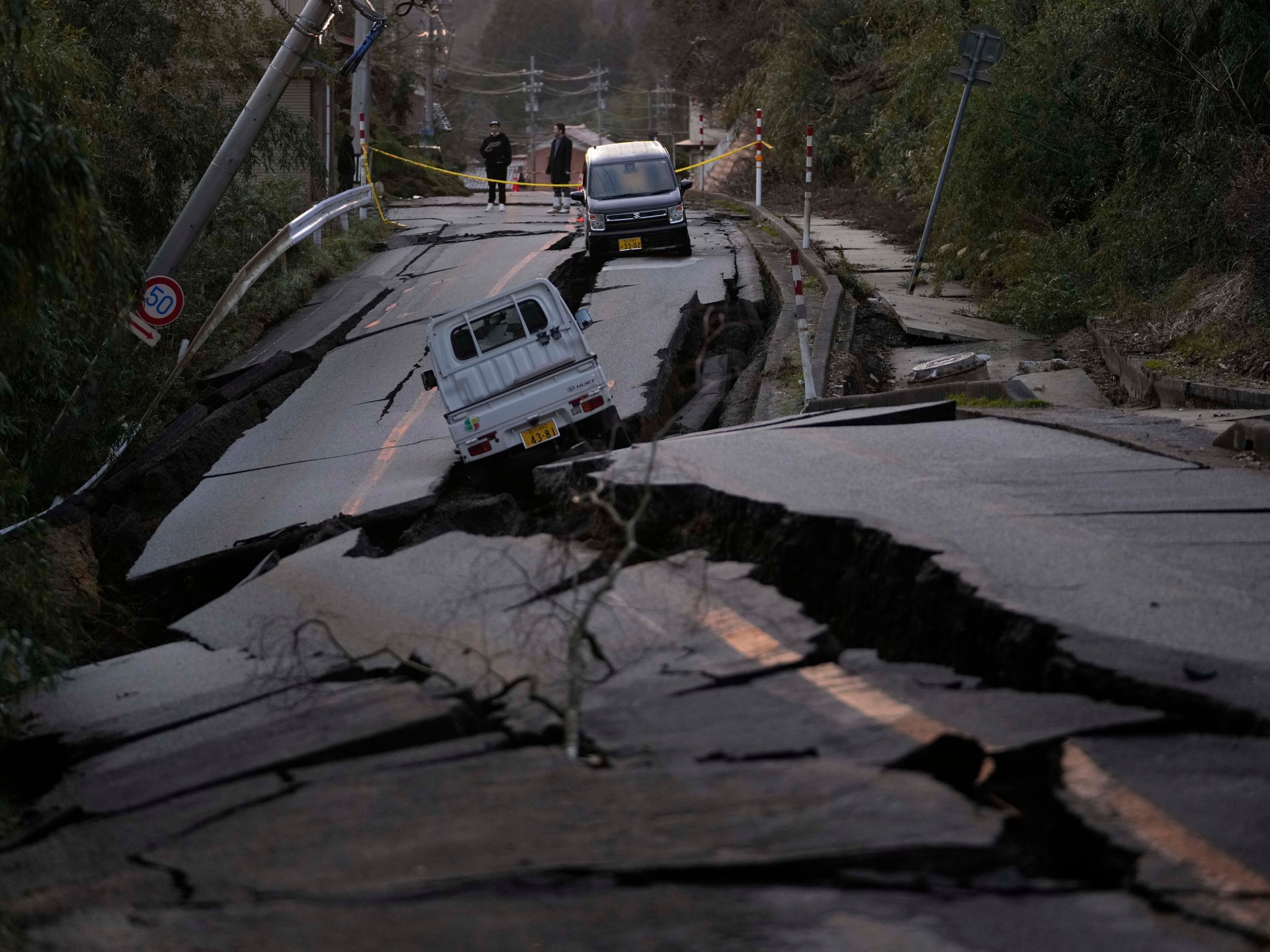
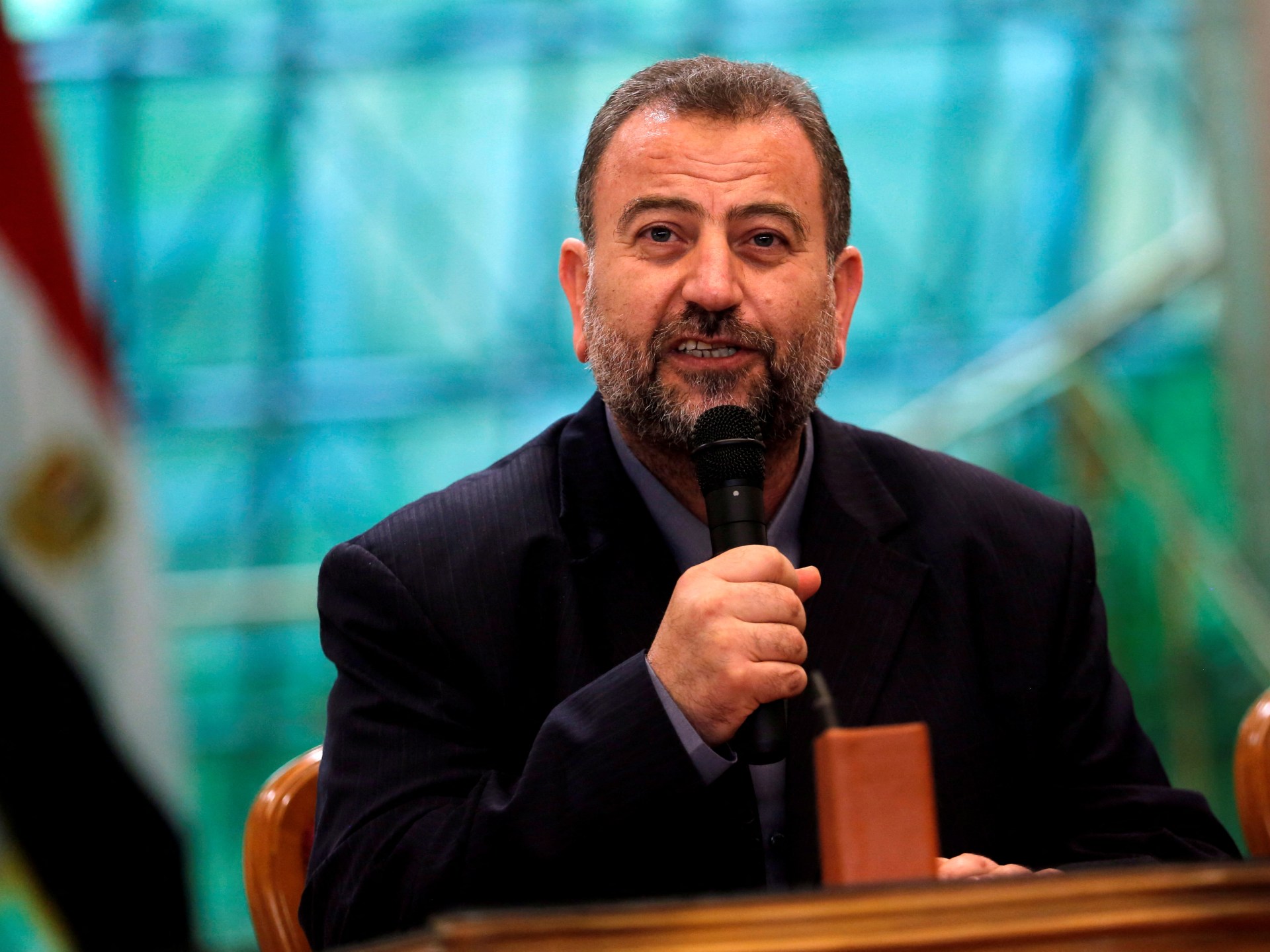





![Presidents Day Weekend Car Sales [2021 Edition] Presidents Day Weekend Car Sales [2021 Edition]](https://www.findthebestcarprice.com/wp-content/uploads/Presidents-Day-Weekend-car-sales.jpg)



 English (United States)
English (United States)